It’s been a year since I took on the role of “Girl Scout Leader” with my daughter and 25 other girls. For those who haven’t been involved with the GSUSA program in some time, it’s far more than cookies, camp outs, and crafts. The organization has truly brought a renewed focus on introducing STEM concepts and STEM careers to the girls at an early age.
Research tells us that girls’ interests in STEM fields start around age 11 and end by age 15. As someone who splits teaching time between the worlds of Communications and CIT, this was pretty heartbreaking to see. So, how do we change the paradigm, not just for my daughter and her sister scouts, but in society?
What prompted this Catharsis:
A few weeks ago I volunteered at a regional scouting event, working with roughly 100 girls/leaders/volunteers – groups rotated through various stations of indoor and outdoor skills building, crafts, etc. (We made ‘leave no trace’ fire starters from cardboard egg cartons in case you were wondering why I was hoarding cartons from across campus.) During the event, with girls and other leaders present, I shared some of the things our troop was working on — “Thinking Like Engineers” and “Race Car Design”. Without wading into the weeds, these badges and curriculum focus on STEM, specifically some basics of physics, design thinking, math (calculating velocity of a car going down a ramp at a given angle), etc.
The reactions from some were fairly heartbreaking:
“I don’t do math.”
“Oh, that’s way out of my wheel house. We don’t do that stuff with my girls”
“That’s way too complicated.”
and the worst:
“Girls don’t like that stuff.”
They said this in front of their girls. Gut punch.
If this is the message that role models send, it’s no wonder girls move away from STEM by age 15.
So, how do we change the paradigm?
I acknowledge I’ve been guilty of this too. And I’m working on being better. I was an Organic Chem class away from a science major in undergrad. I quit Org because it was hard. I make jokes about it now, but do I regret it? You bet… [I sure could have used someone telling 20 year old me that I could do hard things].
Today’s girls need that same message even earlier – Don’t quit. You CAN do hard things. These fields are fun.
I’ve made it my goal to ‘be the person I needed at their age’.
My Pledge, My Message:
1. Science, STEM, and learning are FUN.
2. I will be cognizant of the language I use to describe how I feel about ‘hard things’.
3. We can do hard things.
4. I will seek out role models in the fields. I will be a role model in the field.
5. I will actively share opportunities to help my girls learn and grow.
What have we done?
Last week we designed race cars and tested them on two ramps of varied angles.
Speed = √(weight * gravity * ramp height / sin(ramp angle)) (Also potential Energy not factoring in Kinetic energy)
And then we ask questions and they hypothesize: “Why does changing the angle change the speed?” “Which is faster?”
“What if we just dropped the car from the same distance to the ground?” “If we change the center of mass, how does the distance traveled change?:”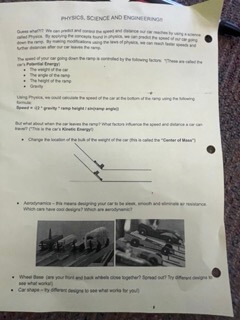
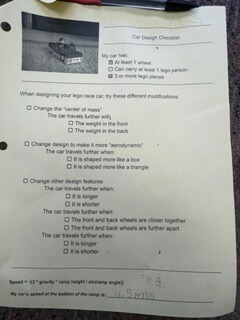
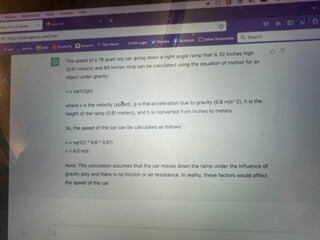

If you were wondering, if we were just calculating the free fall velocity of the car (i.e. dropping it from the height of the ramp) we’d use: v = sqrt(2gh)
I used ChatBot via OpenAI to show the girls the calculations in real time, reading off the outputs after I inputted the data. The loved making modifications and seeing how the numbers shifted (or not).
Earlier in the year, the girls had the challenge of building 3D models using PVC pipes and various connectors. In smaller groups, they ended the meeting by designing a tent frame large enough for the group to fit under. Communication. Problem solving. Listening. AND yes, ENGINEERING. But I didn’t tell them that part right away. We processed our experiences after, and soon they realized they too were all Engineers working through the design thinking process.
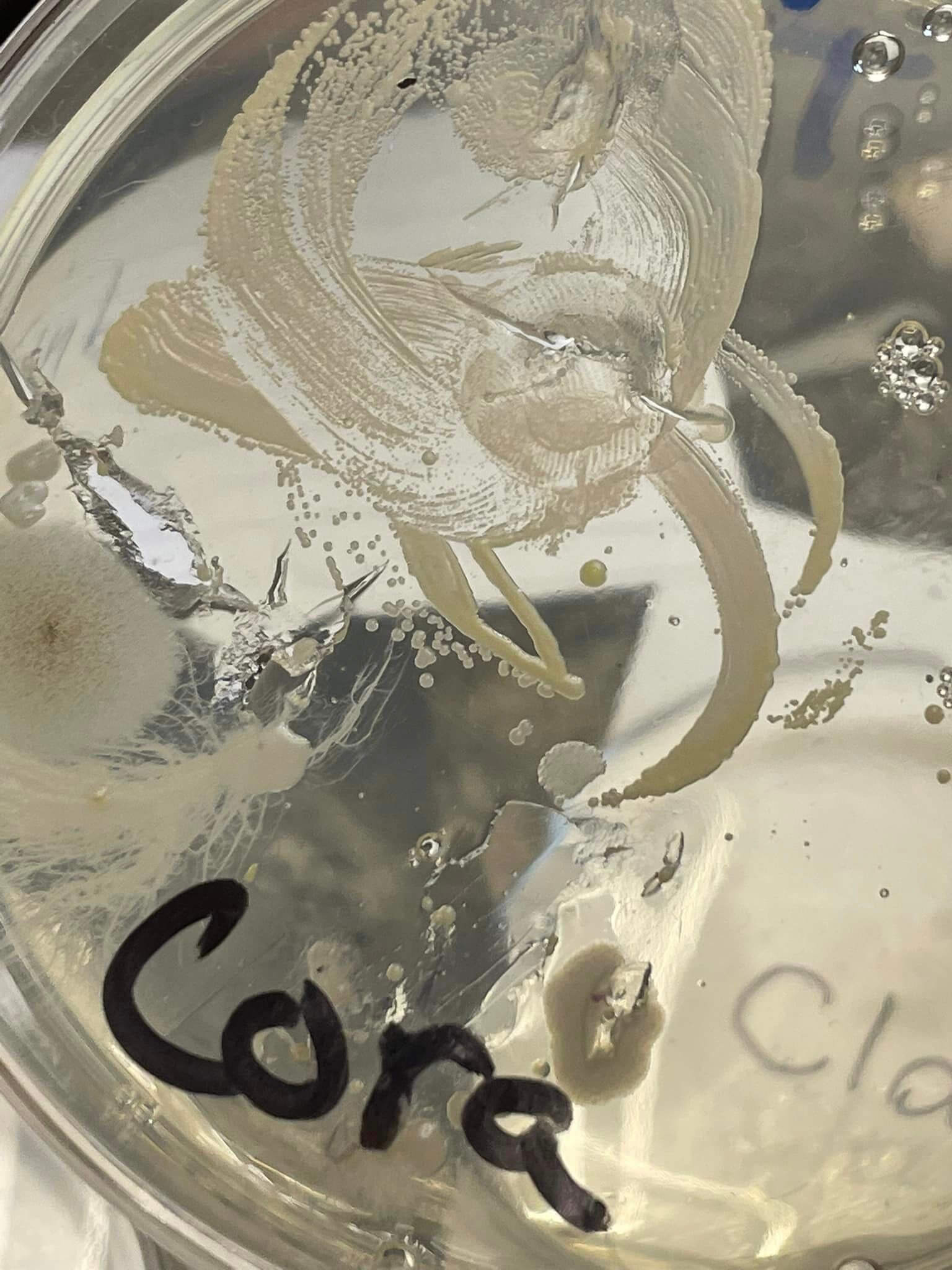
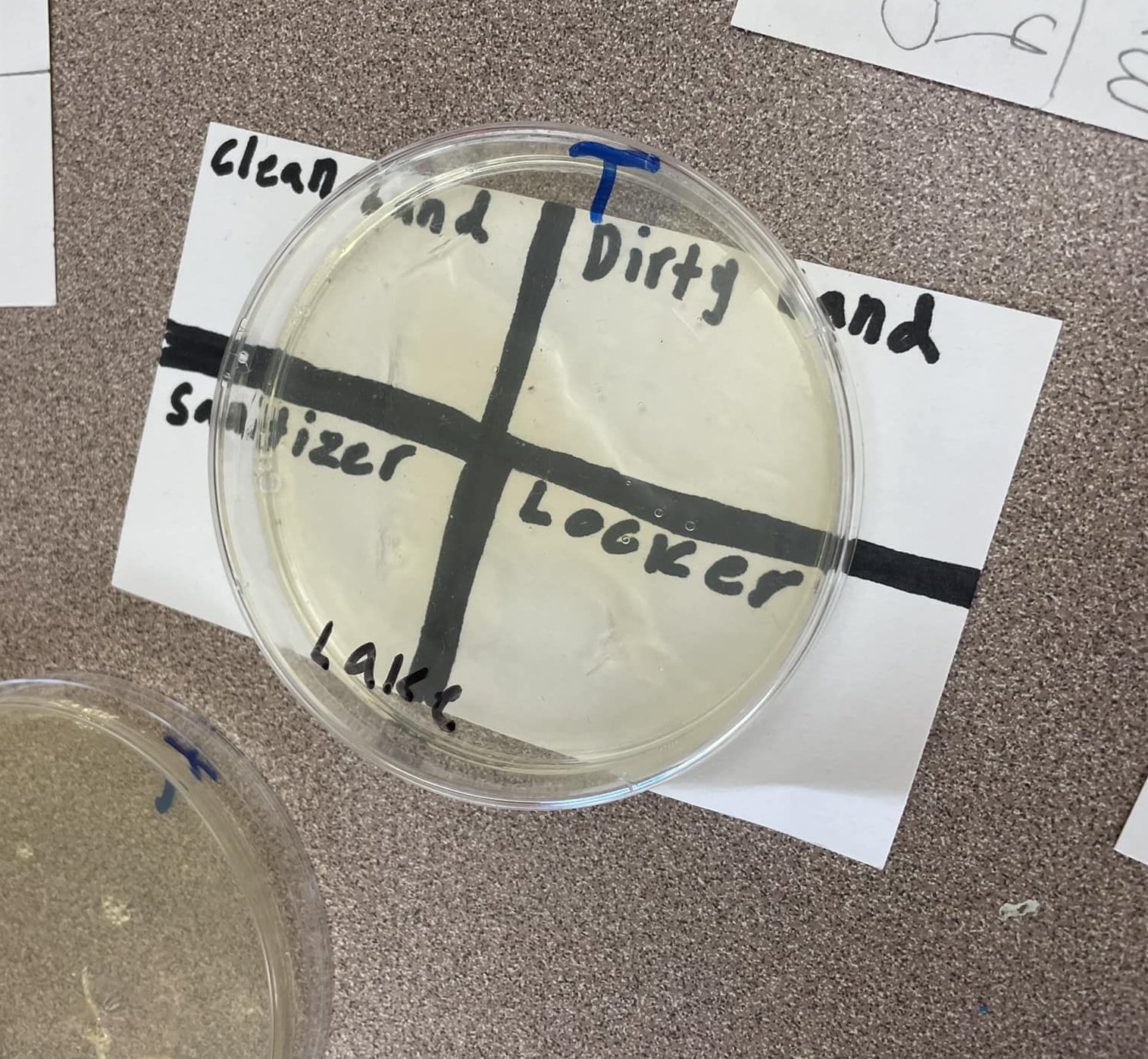
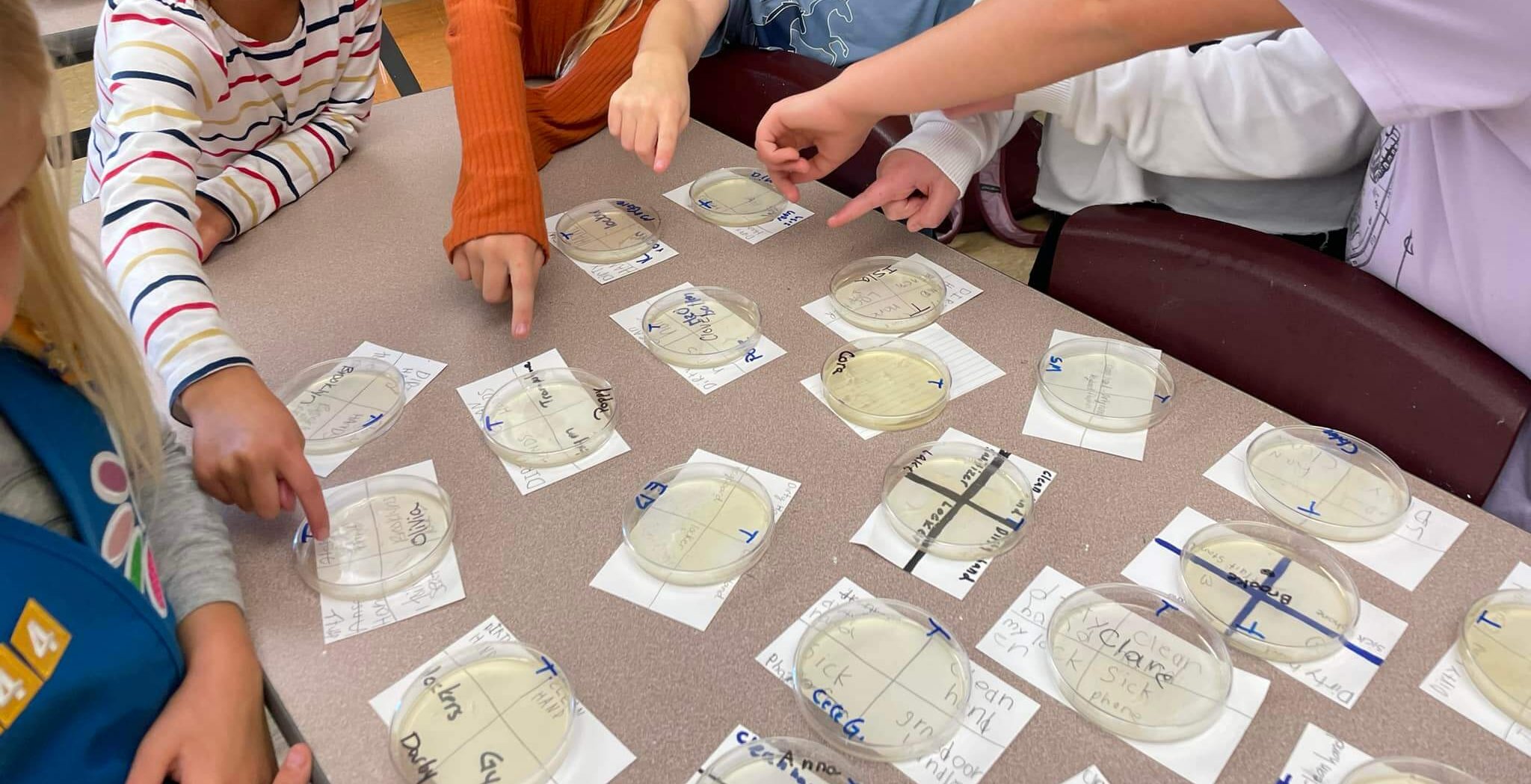
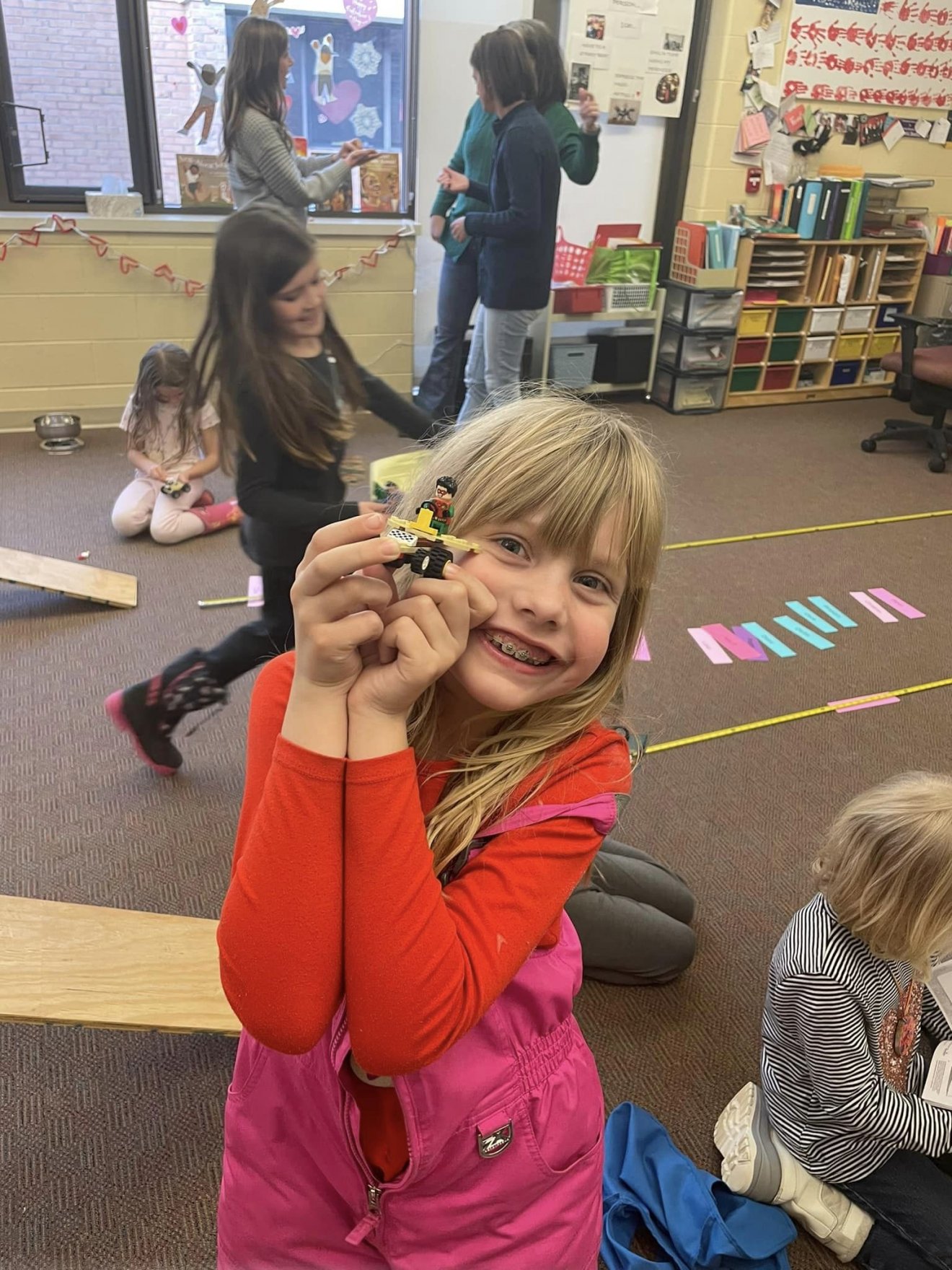
In the fall, we filled petri dishes with agar and tested unwashed hands and the surfaces around the school for bacteria, molds, etc. Spoiler alert: Toilet seats are cleaner than the fruit stand in the cafeteria. Willow Hill’s ‘sick phone’ needs to have its handle cleaned. And, the ‘dirtiest classroom’ was the kindergarten; ironically, the teacher’s name is Mrs. Gross. And, the girls loved it. The grosser, the better. And yes, indeed, it’s important to wash your hands.
We’ve become Citizen Scientists. And we’re “Thinking Like Engineers”.
Today’s daisy-brownie-junior girl scouts are tomorrow’s college students and NMC Hawk Owls. I will share the opportunities we offer so that they can imagine the possibilities: Pilots. Engineers. Computer Scientists. Medical Professionals. And yes, Artists. Writers. Chefs. Communicators. Helpers. The skills are transferable and interwoven. [I just need to look in the mirror]. Careers no longer fit into the degree molds that define college educations. The more they come to campus, the more they can envision this as a place where they belong — and learn, grow, and succeed.
What’s Next?:
Some time in May we’ll be exploring Computer Science in a campus computer lab – with girls paired up to design their own PLM programs (the perceptional learning models designed by Mark and Tom). You’ll also see an army of 7-10 yr olds taking pictures of trees, leaves, branches, seeds, blossoms, and more — as they complete a Bronze Award project to document the many varieties of trees across our campus. And yes, later in the summer we will go on camp outs, cook over the campfire, and count the stars overhead. We’re not leaving those traditions behind. We’re just adjusting them for a new generation.

